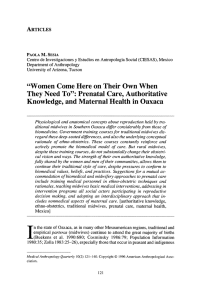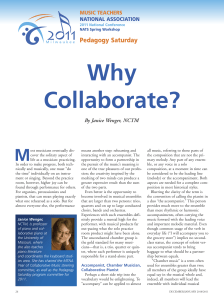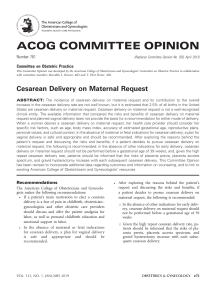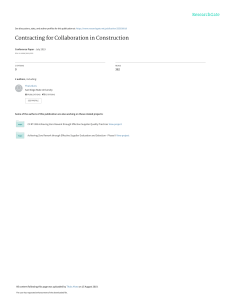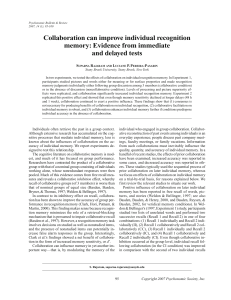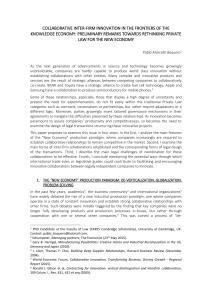Hello, I just received these questions and will try and respond. My
Anuncio
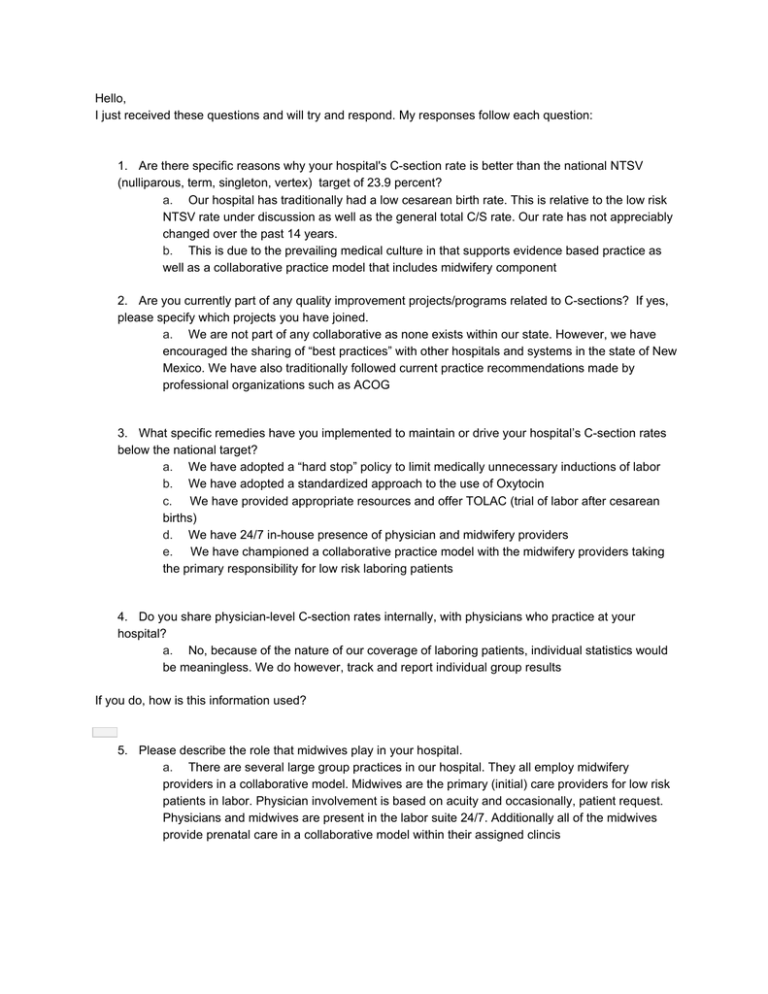
Hello, I just received these questions and will try and respond. My responses follow each question: 1. Are there specific reasons why your hospital's C­section rate is better than the national NTSV (nulliparous, term, singleton, vertex) target of 23.9 percent? a. Our hospital has traditionally had a low cesarean birth rate. This is relative to the low risk NTSV rate under discussion as well as the general total C/S rate. Our rate has not appreciably changed over the past 14 years. b. This is due to the prevailing medical culture in that supports evidence based practice as well as a collaborative practice model that includes midwifery component 2. Are you currently part of any quality improvement projects/programs related to C­sections? If yes, please specify which projects you have joined. a. We are not part of any collaborative as none exists within our state. However, we have encouraged the sharing of “best practices” with other hospitals and systems in the state of New Mexico. We have also traditionally followed current practice recommendations made by professional organizations such as ACOG 3. What specific remedies have you implemented to maintain or drive your hospital’s C­section rates below the national target? a. We have adopted a “hard stop” policy to limit medically unnecessary inductions of labor b. We have adopted a standardized approach to the use of Oxytocin c. We have provided appropriate resources and offer TOLAC (trial of labor after cesarean births) d. We have 24/7 in­house presence of physician and midwifery providers e. We have championed a collaborative practice model with the midwifery providers taking the primary responsibility for low risk laboring patients 4. Do you share physician­level C­section rates internally, with physicians who practice at your hospital? a. No, because of the nature of our coverage of laboring patients, individual statistics would be meaningless. We do however, track and report individual group results If you do, how is this information used? 5. Please describe the role that midwives play in your hospital. a. There are several large group practices in our hospital. They all employ midwifery providers in a collaborative model. Midwives are the primary (initial) care providers for low risk patients in labor. Physician involvement is based on acuity and occasionally, patient request. Physicians and midwives are present in the labor suite 24/7. Additionally all of the midwives provide prenatal care in a collaborative model within their assigned clincis 6. What is your hospital's VBAC rate? Are VBAC candidates encouraged by your hospital's staff and care providers to opt for a trial of labor if desired? a. For 2015 our TOLAC rate was 36%, that is for all eligible patients, 36% attempted. Of those who did 80% succeeded (VBAC). We do encourage appropriate patients to try and we have adopted policies that require a detailed assessment and counseling of the risks and benefits involved as well increased surveillance and limitations (such as no elective induction in a TOLAC) 7. What changes do you plan on implementing in the future , to maintain or further safely lower (if appropriate) your hospital’s C­section rate? a. It is difficult to predict additional changes that might be incorporated as our rates have traditionally been significantly below the national average, however, we are planning on incorporating an audit of our low risk cesarean births to identify trends that could be developing that might impact our outcomes. We are more interested in the process rather than the actual outcome. 8. What information do you share with patients regarding their delivery options at your hospital? Please send us any educational material you send to your patients. a. Options are discussed with the patient as part of their prenatal care. We do not encourage cesarean delivery on demand. Our marketing information is generic and does not specifically address a particular mode of delivery. We have traditionally offered patients a patient centered care model. One example of this is the desire in the community to offer hydrotherapy, labor and delivery in the water. Base on recent guidance from ACOG, we have moved our “water birth” program to fall under strict research protocol protection. We offer a family birthing unit that attempts to recreate a “home birth” experience with minimal intervention yet delivered in a secure hospital setting with emergency support immediately available 9. Describe the role of your hospital's leadership (CEO, Board of Directors) in your hospital’s better­than­national target C­section rate. a. Senior leadership is very supportive of practice patterns and resources that allow for us to achieve these outcomes. b. As the Chief of Women’s Services, I have been involved with ACOG on a national basis in the area of patient safety and evidence based medicine for many years. We tend to be very current in the developing trends that are designed to limit the use of unnecessary interventions I hope that these responses help. Please do not hesitate to call for further comments Abraham Lichtmacher MD FACOG Chief, Women's Services Lovelace Health System





